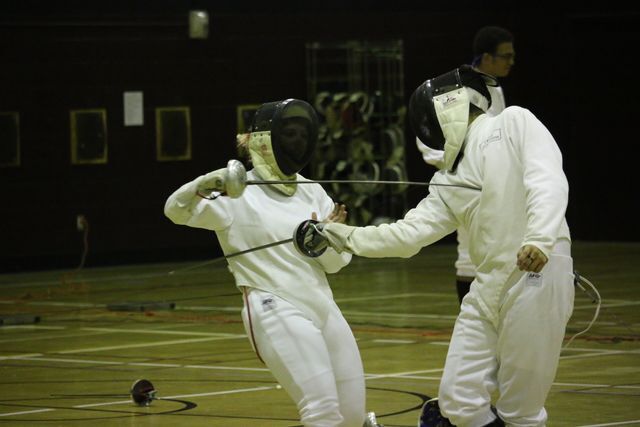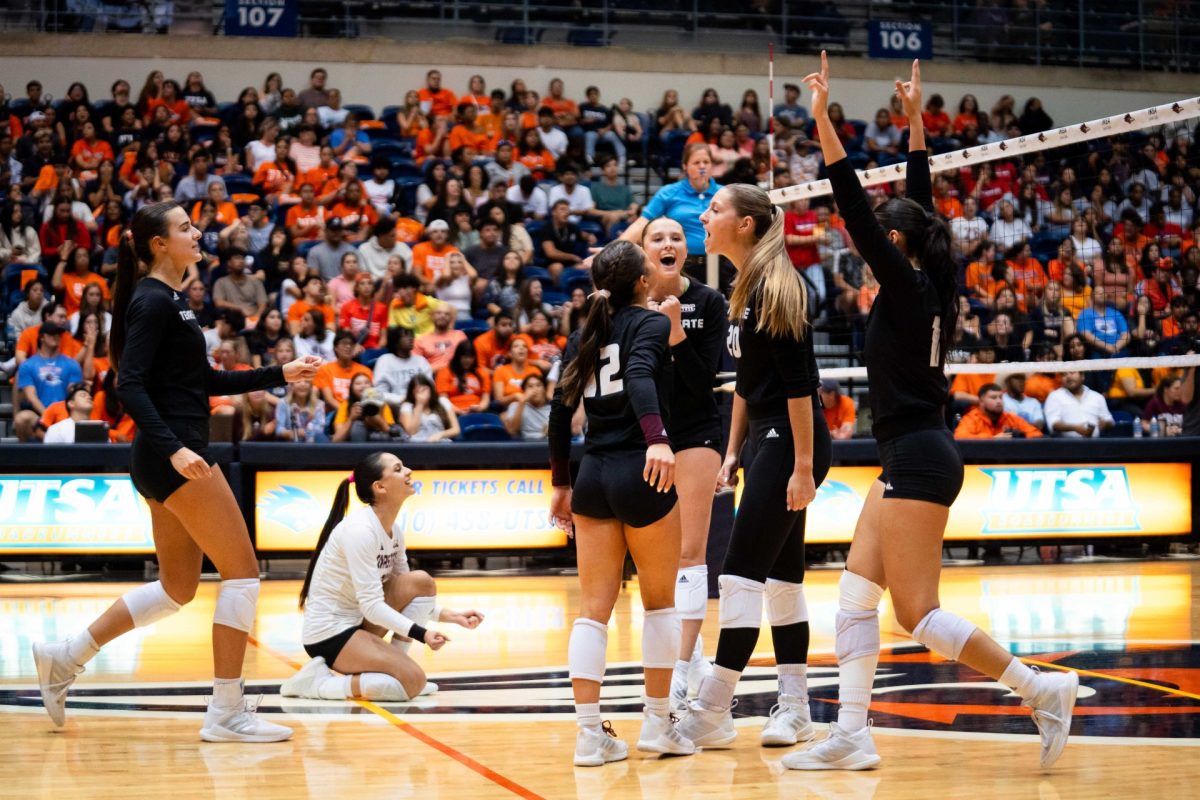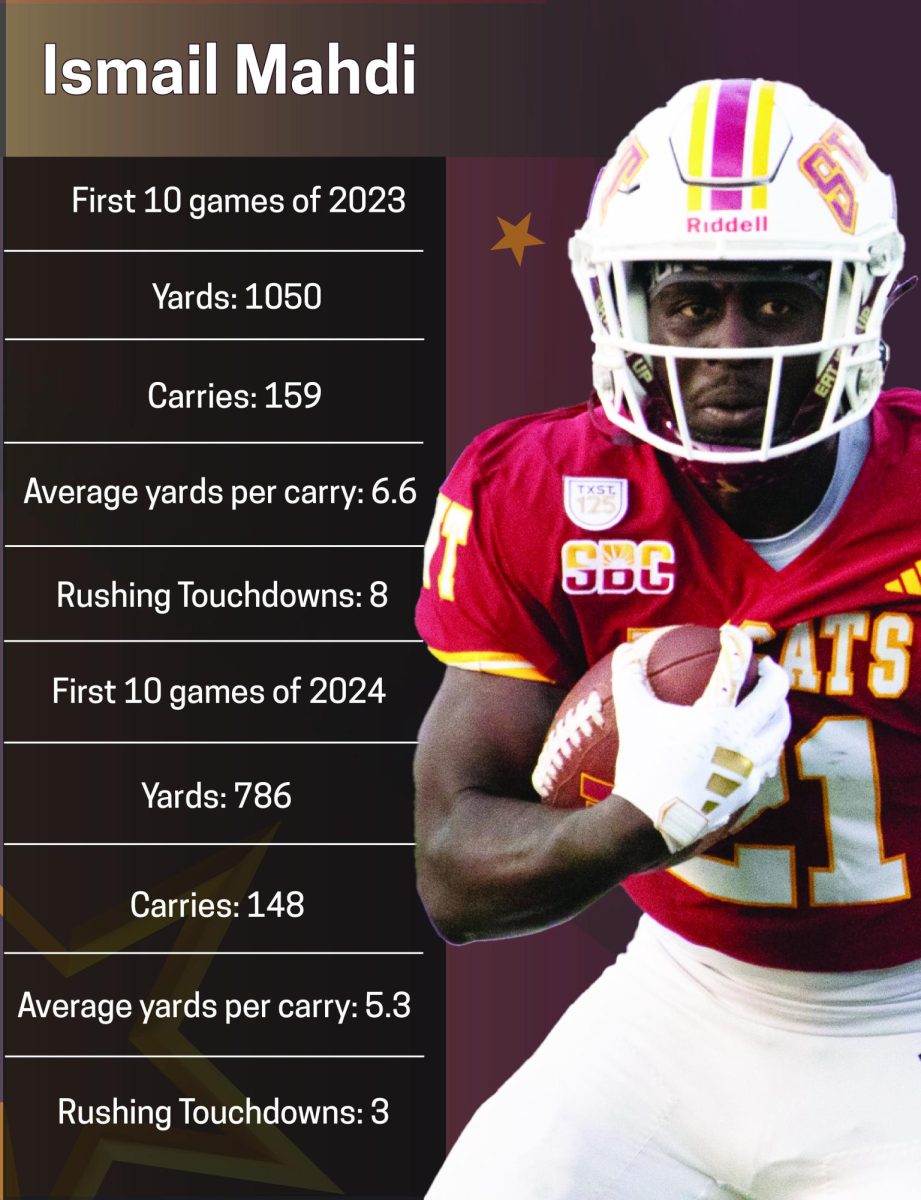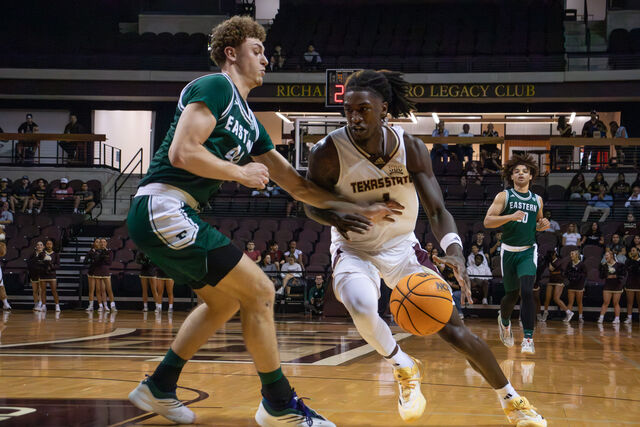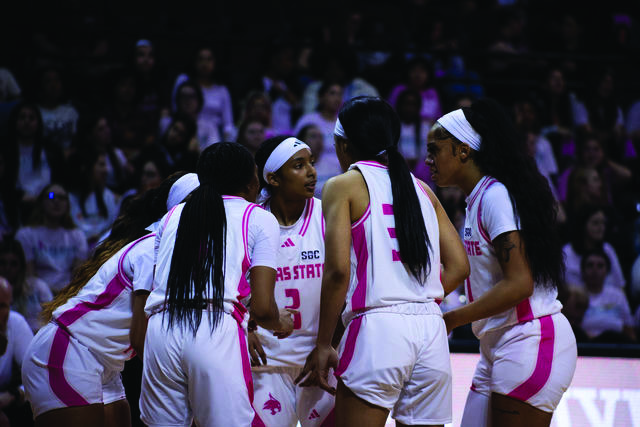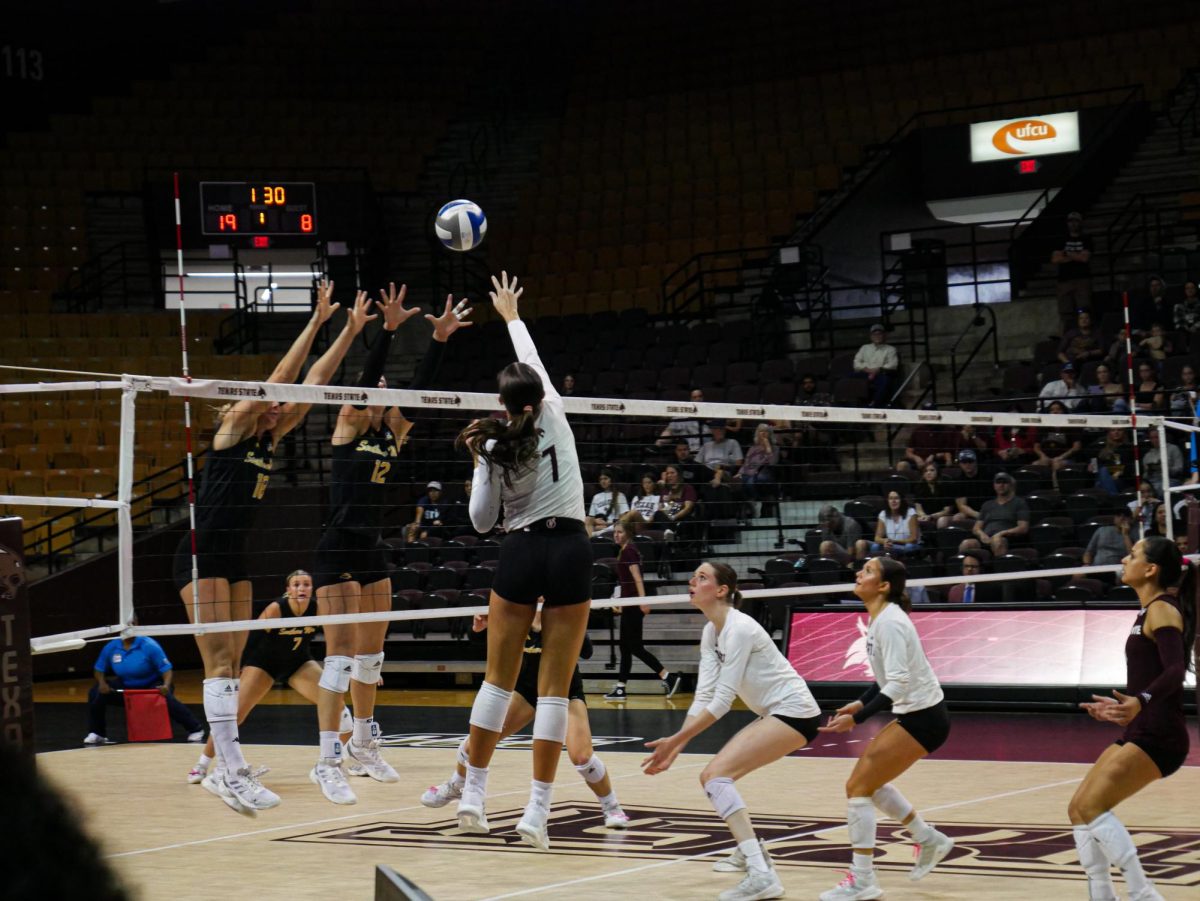The Texas State Fencing Club, the oldest active sports club on campus, is making strides in becoming a competitive household name.
Fencing can be defined as the practice of fighting with swords (Foil, Épée, or Saber) either in attack or defense under a set of rules to score points. The fencing club was founded by ex-Modern Pentathlete Lewis J. Smith in spring 1975. Smith was the coach from 1974-81.
John Monreau took over in 1981 after Smith left to re-join the U.S. Army, and the program has been strong ever since. Monreau left Texas State around three years ago to become the head coach of Texas’ only NCAA Fencing Program at the University of the Incarnate Word in San Antonio.
Monreau, a successful Olympic pentathlete, programmed the fencing club at Texas State to cater toward students with no experience. For 23 years straight, from 1994-2007, the fencing club won the Southwest Intercollegiate Fencing Association. In addition, from 2008-12, the club was crowned as the United States Fencing Association champions in the Épée category.
There are three categories of sword-fighting in fencing: Foil, Épée, and Saber. These three different types of weapons have their own designs and rules of competition. Texas State Fencing Club President Scott Davis said fencing is a technical sport and can be confusing when it comes to the fundamentals behind this sword-fighting game.
“To win a fencing bout, usually bouts are 5, 10, to 15 points, and it’s the first (person) to hit those scores,” Davis said. “It’s one touch at a time or one point at a time. Depending on the different style, like for the Foil and Saber category, we’ll have what’s called a Lamé. It’s just a jacket (we wear) that sends an electrical current to a machine that tells you if you got the touch or not. Then for Épée, anywhere is the target so you don’t need to wear the jacket or lamé.”
Dakota Castro, criminal justice sophomore and armory officer of the club, said all fencers are required to wear during a match are a jacket, a glove, a mask, trousers or knickers, stockings, flat-soled shoes, a body-cord and a lamé.
“It is pretty complicated, (equipment) always breaks easily,” Castro said. “It can be awful, and it’s work but it’s a lot of fun work. There’s just a lot of things that go into fencing.”
The Texas State Fencing Club has a $60-per-semester fee that includes equipment use, travel to at least one tournament during the school year, and any other miscellaneous expenses needed to compete. Club officers like Bradly Strong, computer science sophomore, said the experience and memories make competing invaluable.
“I joined to make friends and to get involved when I first came to Texas State, just to get involved in some type of club,” Strong said. “The experience so far has been really fun, and the people have been very close. That is probably the best part of it for me.”
The Texas State Fencing Team will host individual tournaments Nov. 11 in the Jowers Gym, room 221. Those interested in joining the club can contact Davis at [email protected].
Categories:
The Fencing Club: chess with puncture wounds
November 8, 2018
0
Donate to The University Star
Your donation will support the student journalists of Texas State University. Your contribution will allow us to purchase equipment and cover our annual website hosting costs.
More to Discover


